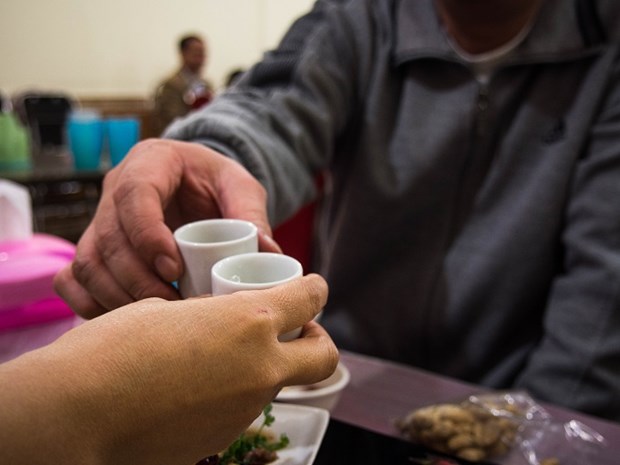Day
five of the Lunar New Year spirit. The men in Lao Cai, near the Chinese border,
are still all about drinking and feasting.
That’s
more than alright for Tuan Anh, the chef of an increasingly popular horse meat
restaurant famous for a hotpot version called thang co.
“It’s
a festival dish. The Hmong people cook every part of four-legged animals in a
giant wok, and bring it to sell at the bazaar,” Anh says, with a big smile on
his red face, eyes moving around the tables where his noisy diners are clearly having
a great time.

Tuan Anh’s thang co served in an electric hotpot. Photo by VnExpress/Quynh Trang
Before
finding its way to restaurants, thang co
has been a best-kept secret of Hmong communities in Sa Pa, Bac Ha or Ha Giang.
The
colorful mixture of horse meat, beef, pork and innards of the animals signals
springtime celebrations. Surrounding a steamy, heavily spiced wok are groups of
locals — the more the merrier. They take a bite. They they take a sip of rice
wine. Then repeat.
Many
visitors from the Red River Delta recently fell in love with the dish and
developed a taste for horse meat, which is still considered a strange if not
controversial kind of meat in many parts of the world. Thang would make a
convincing case for eating horse.
“Horse
meat is very different. The fat doesn’t linger in your mouth,” Anh says. “The
animal also doesn’t ruminate. That's why its organs stay crunchy, even if
stewed for hours.”
At
his restaurant, the dish is served in electric hotpot. Everything else follows
the tradition, almost.
The
chef, who quit a government job after two decades, says he wanted to get a
little bit creative: he added grilled and ground horse meat and spiced everything
up with a fragrant, savory orange chili sauce.
But
don’t expect him to really dish on his recipe.
“There
are spices that need 20 hours to cook,” he says. “I could only tell you there
are cardamom, star anise and a plant called thang
co that grows only in the northern mountains.”

The chef gave the traditional dish his own touch. Photo by VnExpress/Quynh Trang
Local
newspapers have written tales about the dish with 12 to 20 spices to make a
perfect wok. But nobody can say for sure what’s in it because ethnic home cooks
and restaurants are very protective of their own recipes.
For
the diners at Thang’s restaurant, it doesn’t matter anyway.
They
are happy to find a table here. Even in the summer, not the traditional season
of the hotpot, the place would be still being packed — the AC brought some cool
breezes as a stand-in for the northern winter. These days, you have to reserve
a table.
Teleporting
from one table to another in the one hundred square meter space to chat with
his customers, he yells back: “I tell you, food always comes first no matter
what. I only care that my meals bring people together.”

And its companion: alcohol. Photo by VnExpress/Quynh Trang
By Quynh Trang/VnExpress